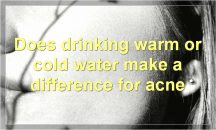If you’ve ever wondered what those tiny black dots on your nose are, chances are they’re sebaceous filaments. But what exactly are they?
What are sebaceous filaments
Sebaceous filaments are small, thread-like structures that are found in the pores of human skin. They are made up of sebum, which is an oily substance secreted by the sebaceous glands. Although they are generally harmless, sebaceous filaments can become clogged and lead to blackheads or whiteheads.
Sebaceous filaments are a normal part of human anatomy and are present in everyone. They are most commonly found on the nose and face, but can also be present on other parts of the body where there are sebaceous glands.
Although they are usually not a cause for concern, sebaceous filaments can sometimes become clogged. When this happens, they may appear as blackheads or whiteheads on the skin. If you have clogged sebaceous filaments, you may notice that your pores appear larger than usual.
There are a few things you can do to reduce the appearance of sebaceous filaments. You can start by washing your face twice a day with a mild cleanser. Exfoliating your skin on a regular basis can also help to remove dead skin cells and unclog pores. If you have particularly stubborn sebaceous filaments, you may want to try using a pore strips or undergoing a professional facial treatment.
What do sebaceous filaments do

Sebaceous filaments are tiny, hair-like structures that protrude from the pores of the skin. These filaments are made up of sebum, which is an oily substance that helps to keep the skin lubricated and soft. Although sebaceous filaments are generally considered to be a normal part of the skin, some people may find them to be unsightly and may want to remove them.
There are a few different ways that sebaceous filaments can be removed, but it is important to note that they will usually eventually grow back. Some methods of removal include using pore strips, comedone extractors, or undergoing a professional facial. It is also possible to reduce the appearance of sebaceous filaments by keeping the pores clean and free of dirt and oil build-up.
How are sebaceous filaments formed
Sebaceous filaments are small, cylindrical structures that are found in hair follicles. These structures are composed of sebum, which is an oily substance produced by the sebaceous glands. The main function of sebum is to lubricate and waterproof the skin and hair. However, sebaceous glands can become overactive, resulting in the production of excess sebum. This excess sebum can accumulate in hair follicles and form sebaceous filaments.
Sebaceous glands are most commonly found in the scalp, face, and chest. These glands secrete sebum through a network of ducts that open into hair follicles. The size and number of sebaceous glands vary from person to person. People with more sebaceous glands tend to have oilier skin.
Sebaceous filaments are not harmful and do not need to be removed. However, some people may want to remove them for cosmetic reasons. There are several ways to remove sebaceous filaments, including manually extracting them with a comedone extractor or applying a topical retinoid cream.
What is the function of sebaceous filaments
A sebaceous filament is a tiny collection of sebum and dead skin cells that resides in a hair follicle. The main function of sebum is to lubricate and waterproof the skin and hair. Although sebaceous filaments are generally considered harmless, they can become enlarged and visible when blocked. In some cases, sebaceous filaments may be mistaken for blackheads.
What are the benefits of sebaceous filaments
Sebaceous filaments are tiny, cylindrical structures that are found in the pores of human skin. Although they are commonly mistaken for blackheads, sebaceous filaments are actually made up of sebum, which is an oily substance produced by the sebaceous glands. The main function of sebum is to keep our skin and hair lubricated, but it can also lead to clogged pores and acne.
While sebaceous filaments may not be the most aesthetically pleasing things on our skin, they are actually beneficial in many ways. For one, they help to regulate sebum production. If our pores become clogged with excess sebum, it can lead to breakouts. However, sebaceous filaments help to keep the pores clear and prevent them from becoming too oily.
In addition, sebaceous filaments play a role in wound healing. When we get a cut or scrape, our body produces sebum to help protect the wound and promote healing. Without sebaceous filaments, our wounds would heal more slowly and we would be more susceptible to infection.
So, although they may not look pretty, sebaceous filaments are actually essential for keeping our skin healthy and functioning properly.
Are sebaceous filaments good or bad for your skin

Sebaceous filaments are small, cylindrical collections of sebum and keratin that can be found on the face, particularly around the nose and chin. Although they are completely normal, many people view them as unsightly and strive to get rid of them.
So, are sebaceous filaments good or bad for your skin? In short, there is no right or wrong answer. Some people find that their skin looks and feels better when they remove their sebaceous filaments, while others are perfectly content with leaving them alone. Ultimately, it is up to you to decide what works best for your skin.
If you do choose to remove your sebaceous filaments, there are a few different methods you can try. Firstly, you can use a comedone extractor, which is a small tool that helps to gently squeeze out the filament. Alternatively, you can use a pore strip, which is a piece of adhesive that sticks to the skin and pulls out the filaments as it is removed.
Whichever method you choose, it is important to be gentle with your skin. Over-aggressive extraction can lead to scarring and irritation, so it is best to err on the side of caution. If you are unsure about how to safely remove sebaceous filaments, it is always best to consult with a dermatologist or skincare professional.
How can you get rid of sebaceous filaments
Sebaceous filaments are small, thin hairs that grow from the sebaceous glands in your skin. These glands produce sebum, an oily substance that lubricates and waterproofs your skin and hair. The sebum travels up the hair follicle and out through the pores.
Sebaceous filaments are a normal part of your skin’s anatomy. However, they can become visible when they become clogged with excess sebum and dead skin cells. This can happen when you have oily skin or if you don’t cleanse your face properly.
There are a few things you can do to get rid of sebaceous filaments:
1. Cleanse your face twice a day with a mild cleanser. Be sure to remove all makeup before cleansing.
2. Exfoliate your skin once or twice a week with a gentle scrub or exfoliating brush. This will help to remove dead skin cells and unclog pores.
3. Use a pore-minimizing product containing retinol or salicylic acid. These ingredients can help to reduce the size of pores and prevent sebum buildup.
4. See a dermatologist for professional treatments such as microdermabrasion, chemical peels, or laser therapy. These treatments can help to improve the appearance of your skin by reducing the visibility of sebaceous filaments.
What home remedies can help with sebaceous filaments
Sebaceous filaments are a common skin concern that can be treated with a variety of home remedies. Sebum, the natural oil produced by the sebaceous glands, helps to keep the skin lubricated and protected. However, when there is an overproduction of sebum, it can lead to the formation of sebaceous filaments. These tiny tubes of hardened sebum can become clogged, leading to blackheads and other blemishes.
There are a number of home remedies that can help to treat sebaceous filaments, including:
– Cleansing the skin with a mild soap or cleanser twice daily.
– Exfoliating the skin regularly with a gentle scrub or exfoliant.
– Applying a clay mask to the affected area once or twice per week.
– Using a topical retinoid cream or gel as directed by a physician.
– Trying tea tree oil as a spot treatment for individual blackheads.
By following these simple tips, you can help to reduce the appearance of sebaceous filaments and achieve clear, healthy skin.
What over the counter treatments are available for sebaceous filaments
Sebaceous filaments are small, hair-like structures that are found in the pores of the skin. They are made up of sebum, which is an oily substance that helps to keep the skin moisturized. Although sebaceous filaments are completely harmless, they can be a source of embarrassment for many people.
There are a number of over-the-counter treatments that are available for sebaceous filaments. These include topical treatments such as retinoids, salicylic acid, and benzoyl peroxide. These ingredients help to break down the sebum that makes up the sebaceous filaments, which can then be flushed out of the pores.
Another option is to use a pore strips or pore vacuum. These devices work by physically removing the sebaceous filaments from the pores. However, they only provide temporary relief and the sebaceous filaments will eventually grow back.
If you are concerned about your sebaceous filaments, talk to your dermatologist. They can recommend the best treatment option for you based on your individual needs.
When should you see a dermatologist for sebaceous filaments
Sebaceous filaments are tiny, hair-like structures that protrude from the pores on your skin. They’re made up of sebum, an oily substance that helps keep your skin lubricated. Although they’re usually too small to see with the naked eye, sebaceous filaments can become noticeable when they become clogged with dirt and oil.
While sebaceous filaments are generally harmless, some people may want to get rid of them for cosmetic reasons. If you’re considering seeing a dermatologist for sebaceous filaments, here are a few things to keep in mind.
First, it’s important to understand that there’s no quick fix for sebaceous filaments. Treatment options, such as laser therapy or chemical peels, can help reduce their appearance, but they won’t completely get rid of them. In other words, don’t expect to walk out of your dermatologist’s office with perfect, pore-less skin.
Second, treatment for sebaceous filaments can be expensive. If you’re considering seeing a dermatologist, be sure to ask about the cost of treatment upfront.
Finally, keep in mind that sebaceous filaments are a natural part of your skin. Although they may not be aesthetically pleasing, they serve an important purpose in keeping your skin healthy. With that said, if you’re unhappy with their appearance and want to explore treatment options, a visit to your dermatologist may be worth it.





